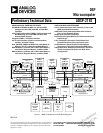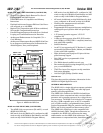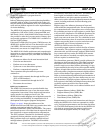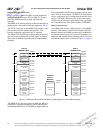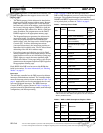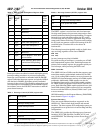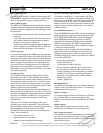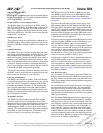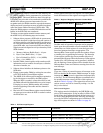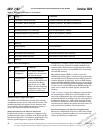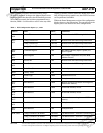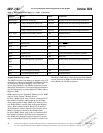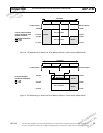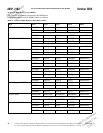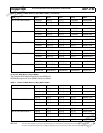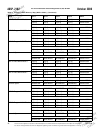
P
R
E
L
I
M
I
N
A
R
Y
T
E
C
H
N
I
C
A
L
D
A
T
A
P
R
E
L
I
M
I
N
A
R
Y
T
E
C
H
N
I
C
A
L
D
A
T
A
This information applies to a product under development. Its characteristics and specifications are subject to change with-
out notice. Analog Devices assumes no obligation regarding future manufacturing unless otherwise agreed to in writing.
7REV. PrA
For current information contact Analog Devices at (781) 461-3881
ADSP-2192October 2000
PCI 2.2 Host Interface
The ADSP-2192 includes a 33MHz, 32 bit bus master PCI
interface that is compliant with revision 2.2 of the PCI spec-
ification. This interface supports the high data rates.
USB 1.1 Host Interface.
The ADSP-2192 USB interface enables the host system to
configure and attach a single device with multiple interfaces
and various endpoint configurations. The advantages of this
design include:
• Programmable descriptors and class-specific command
interpreter.
• An on-chip 8052 compatible MCU allows the user to
soft download different configurations and support
standard or class-specific commands.
• Total of 8 user-defined endpoints provided. Endpoints
can be configured as either BULK, ISO, or INT and
can be grouped and assigned to any interface.
Sub-ISA Interface
In systems which combine the ADSP-2192 chip with other
devices on a single PCI interface, the ADSP-2192 Sub-ISA
mode is used to provide a simpler interface which bypasses
the ADSP-2192’s PCI interface. In this mode the Combo
Master assumes all responsibility for interfacing the func-
tion to the PCI bus, including provision of Configuration
Space registers for the ADSP-2192 system as a separate
PnP function. In Sub-ISA Mode the PCI Pins are reconfig-
ured for ISA operation.
CardBus Interface
The CardBus standard provides higher levels of perfor-
mance than the 16-bit PC Card standard. For example,
32-bit CardBus cards are able to take advantage of internal
bus speeds that can be as much as four- to six-times faster
than 16-bit PC Cards. This design provides for a compact,
rugged card that can be inserted completely within its host
computer without any external cabling.
Since CardBus performance attains the same high level as
the host platform's internal (PCI) system bus, it is an excel-
lent way to add high speed communications to the notebook
form factor. In addition, CardBus PC Cards operate at a
power-saving 3.3 volts, extending battery life in most
configurations.
This new 32-bit CardBus technology provides up to
132Mbytes per second of bandwidth. This performance
makes CardBus an ideal vehicle to furnish the demands of
high throughput communications such as ADSL.
CardBus PC Cards generate less heat and consume less
power. This is attained by:
• Low voltage operation at 3.3V.
• Software control of clock speed.
• Advanced power management mechanism
AC’97 2.1 External Codec Interface
The industry standard AC’97 serial interface (AC-Link)
incorporates a 7-pin digital serial interface that links com-
pliant codecs to the ADSP-2192. The ACLink implements
a bi-directional, fixed rate, serial PCM digital stream. It
handles multiple input and output audio streams as well as
control and status register accesses using a time division
multiplex scheme.
Serial EEPROM Interface
The Serial EEPROM for the ADSP-2192 can overwrite the
following information which is returned during the USB
GET DEVICE DESCRIPTOR command. During the
Serial EEPROM initialization procedure, the DSP is
responsible for writing the USB Descriptor Vendor ID,
USB Descriptor Product ID, USB Descriptor Release
Number, and USB Descriptor Device Attributes registers
to change the default settings.
All descriptors can be changed when downloading the
RAM-based MCU re-numeration code, except for the
Manufacturer and Product, which are supported in the
CONFIG DEVICE and cannot be overwritten or changed
by the Serial EEPROM.
• Vendor ID (0x0456 ADI)
• Product ID (0x2192)
• Device Release Number (0x0100)
• Device Attributes (0x80FA): SP (1=self-powered,
0=bus-powered, default=0); RW (1=have remote
wake-up capability, 0=no remote wake-up capability,
deafult=0); C[7:0] (power consumption from bus
expressed in 2mA units; default = 0xFA 500mA)
• Manufacturer (ADI)
• Product (ADI Device)
Internal Interfaces
The ADSP-2192 provides three types of internal interfaces:
registers, codec, and DSP memory buses. The following
sections discuss those interfaces.
Register Interface
The register interface allows the PCI interface, USB inter-
face, and both DSPs to communicate with the I/O
Registers. These registers map into DSP, PCI, and USB I/O
spaces.
Register Spaces
Several different register spaces are defined on the
ADSP-2192, as described in the following sections.
PCI Configuration Space
These registers control the configuration of the PCI Inter-
face. Most of these registers are only accessible via the PCI
Bus although a subset is accessible to the DSP for configu-
ration during the boot.



